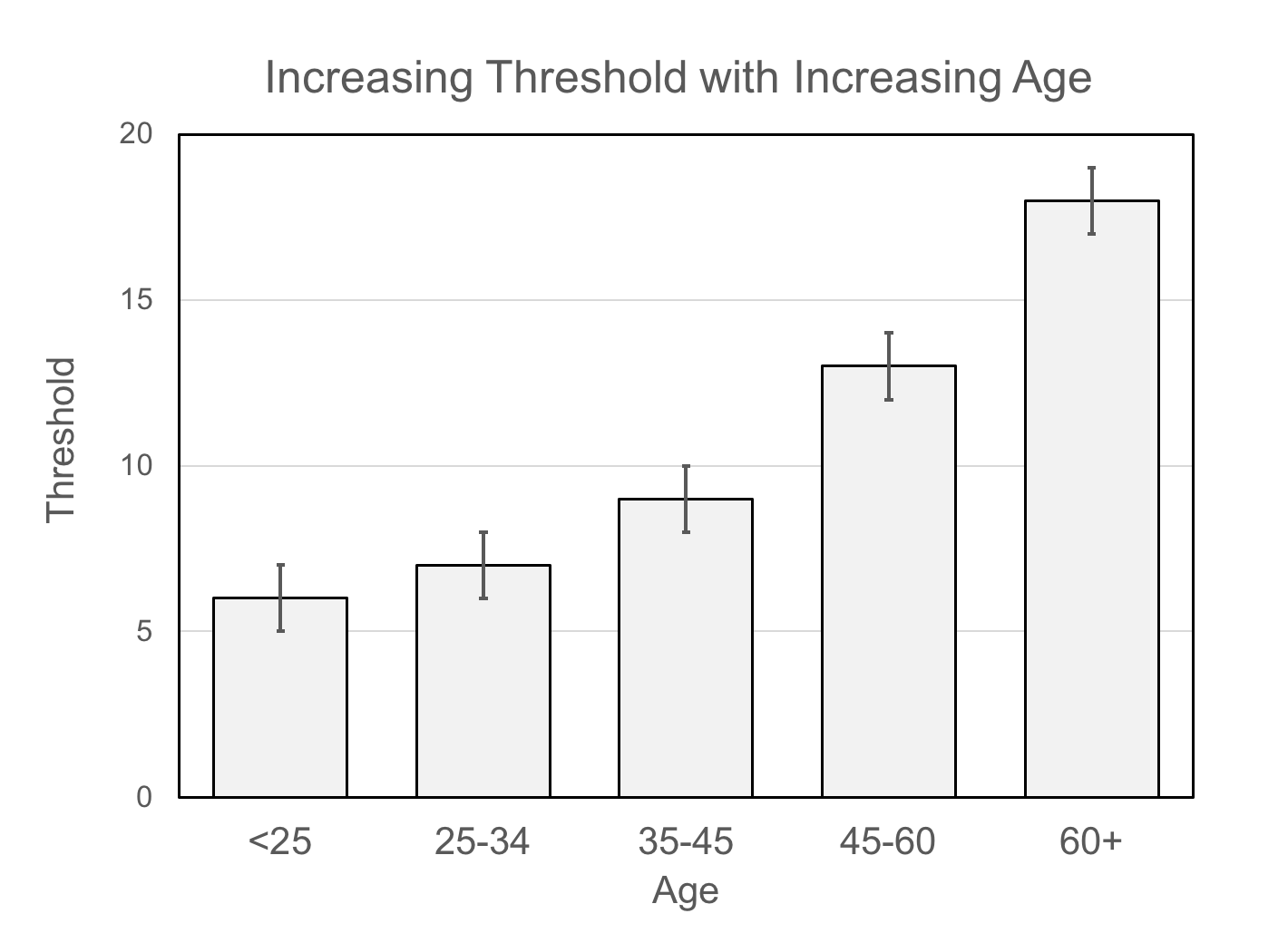Cortical metrics stay within normative range for a large age spectrum – as long as people stay healthy.
We often get asked whether age-related declines in skin sensitivity can affect your Brain Gauge scores. This is a legitimate concern, as confounding factors in the peripheral nervous system can invalidate many neurological tests. If peripheral sensory receptors are transmitting weak or noisey signals in response to a certain stimulus, the test will fail to effectively activate the central nervous system. Fortunately, we kept this issue in mind during our research and development, and have designed the Brain Gauge to deliver reliable and meaningful neurological tests.
Each Brain Gauge test was designed to maximize the signal-to-noise ratio of the transmitting neurons. Our device uses precise, calibrated vibrations to deliver stimuli to the fingertips at amplitudes large enough to obscure any changes in skin sensitivity. Additionally, our tests target cortical pathways that are centrally mediated; any variances detected by the Brain Gauge will directly reflect the integrity of the central nervous system.
Consider the two graphs below:

The first plot shows how threshold - the smallest tactile stimulus that a person is able to detect, and a function of skin physiology - tends to increase with age. Sensitivity is defined as the inverse of threshold; thus, sensitivity tends to get worse as we age. This implication has sparked concern about whether skin sensitivity can influence the efficacy of tactile stimulation.
However, note that the thresholds at every age are between 5-20 microns (1 micron = 0.000000001 meters). We can therefore minimize any differences in skin sensitivity by delivering a stimulus with an amplitude that is substantially larger than the range of thresholds. For our amplitude discrimination tasks, in which subjects are asked to identify the larger of two vibrations, we deliver stimuli of about 200 microns - 10x greater than the smallest detectable thresholds.

The second figure shows the average results on our amplitude discrimination tests by healthy control subjects in different age groups. Note that unlike measures of sensitivity, discrimination scores do not decline with age. In contrast, numerous studies have noted significant changes to amplitude discrimination capacity in the presence of neurological disorders. This makes our amplitude discrimination test a valuable and reliable tool for assessing brain health.
Amplitude discrimination is dependent on lateral inhibition. You can learn more about lateral inhibition here.
